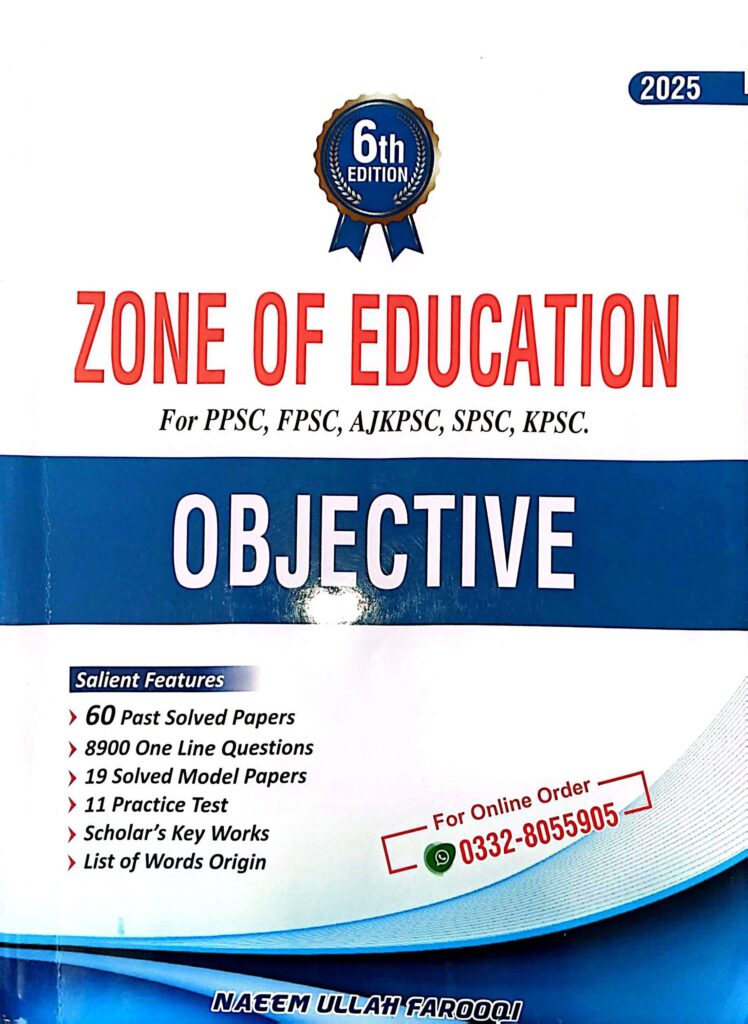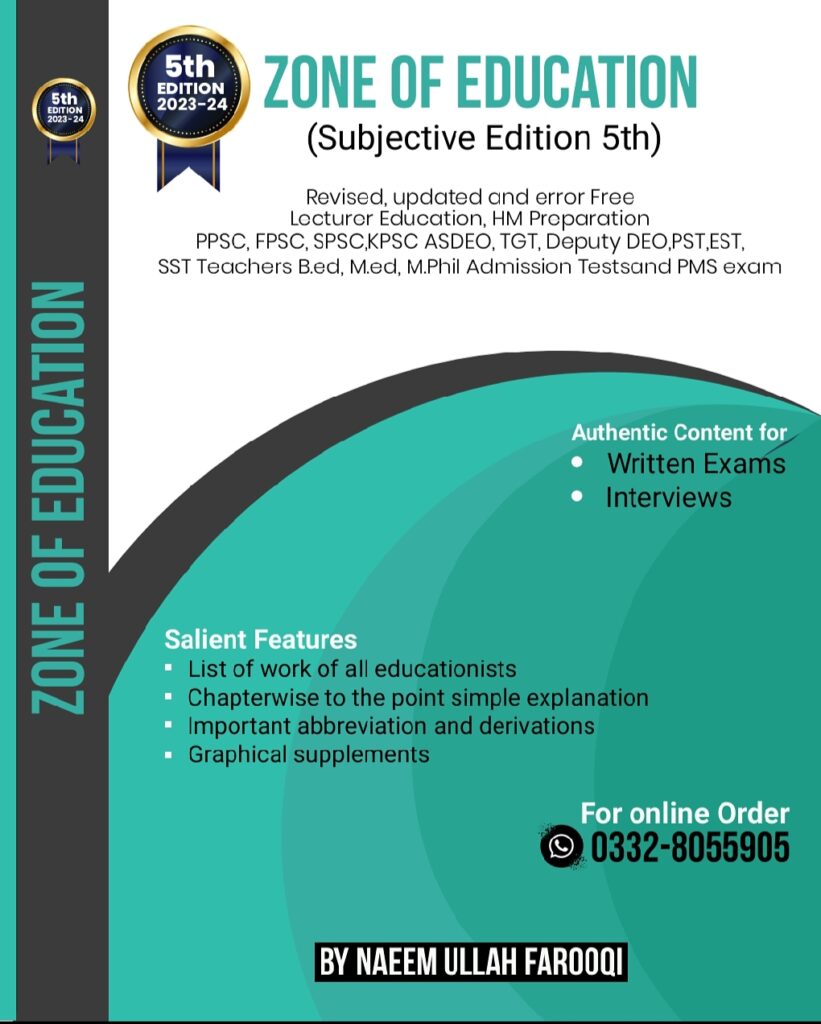MCQS FROM PAST PAPERS
35. Hawthorne studies were conducted between:
(A) 1927-1932 (B) 1985-1987
(C) 1970-1980 (D)None of these
36. A regulatory process directing the activities of an organization to achieve specific goals.
(A) recruitment (B) supervision
(C) Planning (D) Controlling
37. Educational Supervision Means:
(A) Assistance in development of teaching learning process
(B) That discipline through which we control affairs of others
(C) Both (A)&(B)
(D) None of these
38. Top Management works on:
(A) Long term plan
(B) Corporate plan (C) Budgeting (D)None of these
39. A Strategic plan is also called:
(A) Long term plan (B) Short term plan
(C) Both (A) & (B) (D) None of these
40. First step in planning process is to :
(A) Set an objective
(B) Evaluate alternatives
(C ) Determine strength and weaknesses (D) None of these
41. Short term plans in education are generally of ______ years.
(A) One to three (B) Three to five
(C ) Five to ten (D) None of these
42. Who said this Educational planning in its broadest sense, is the application of : rational Systematic analysis to the process of educational development”?
(A)Zeigler (B) Adam Curl
(C) P.H. Coombs (D) None of these
43. Planning aims at creating an adequate_________ situation.
(A) Past (B) Present
(C) Future (D) None of these
44. Systematic change in mental processes that underlie all learning and performance is
Referred to as:
(A) Moral development
(B) Cognitive development
(C) Social emotional development
(D) None of these
45. The primary aim of Educational Psychology is:
(A) To contribute to an understanding of sound educational practices.
(B) To provide the academic background essential for effective teaching.
(C) To provide a theoretical framework for educational research.
(D) None of these
46. Curriculum is:
(A) Course (B) Syllabus
(C ) Co-curricular Activities
(D) All the learning experience
47. The thinking process involved in producing an idea or concept that is new, original and Useful is termed as:
(A) Creativity (B) Innovation (C) Intelligence (D) None of these
48. Which one of theories of intelligence advocates the presence of general intelligence “g” And specific intelligence “s’
(A) Spearman’s two factor theory
(B) Vernon’s hierarchical theory
(C ) Guilford’s theory of Intellect
(D) None of these
49. Moods are formed during:
(A) Infancy (B) Adolescence
(C) Adulthood (D) None of these
50. Which is the Master Emotion?
(A) Happiness (B) Worry
(C) Fear (D) Shame
51. An organized pattern of behavior which the child develops when he is engaged in activity
(A) Schema (B) Adaptation
(c) Accommodation (D) None of these
52. Trial and error theory of learning was presented by:
(A) Tolman (B) Thorndike
(C) B.F.Skinner (D) None of these
53. Jung (1933) presented the idea of which kind of unconcious
(A) Secondary (B) Collective
(C) Opposite (D) Primary
54. Effectiveness of curriculum is determined by :
(A) Design (B) Evaluation
(C) Design (D) None of these
55. Curriculum organization used for different concepts at the same class is:
(A) Horizontal (B) Vertical
(C) Logical (D) None of these
56. “Curriculum is interpreted to mean all the organized courses, activities experiences which students have under the direction of the school, whether in the classroom or not” is said by:
(A) Hilda Taba (B) Jhon Ross
(C) HRugg (D) None of these
57. Intelligence level of gifted students is:
(A) 90 and above (B) 110 and above
(C) 140 and above (D) None of these
58. if two or more methods are mixed up for teaching, the teaching method will be known as:
(A) Mixed method (B) Combined method (C) Eclectic method (D) None of these
59. Summative evaluation takes place:
(A) In the beginning (B) In the middle
(C) After intervals (D) None
60. During demonstration, the topic should be presented in:
(A) Suspending style (B) Problematic style (C) Debatable style (D) None of these
61. “In discovery methods of teaching, the students are generally forced to work as scientists.” This statement is propounded by:
(A) Theodore Bit (B) Jhon Dewey
(C) Armstrong (D) None of these
62. The central principle of Heuristic method is
(A) Learning by doing
(B) Learning from past
(C) Learning through others
(D) None of these
63. Percentage of knowledge gained through observation is:
(A) 75% (B) 50%
(C) 34% (D) None of these
64. Keeping in view the type of students in a class are generally grouped as:
(A) Average (B) Below average (C)Above average (D) All of these
65. Rote learning is a demerit of:
(A) Subject centered curriculum
(B) learner center curriculum
(C) Activity center curriculum
(D) None of these
66. The most important component of lesson plan is :
(A) Evaluation (B) Objectives
(C) I.Q (D) None of these
67. Classroom management creates a set of…. …used in an organized classroom environment
(A) Expectations (B) Past learning
(C) Sequence (D) None of these
68. Classroom management revolves around teachers’ and students’…… and actions that influence students ‘behaviors in the classroom.
(A) Attitudes (B) Aptitude
(C) Creativity (D) None of these
JOIN ZONE OF EDUCATIONPK!
Discover the most comprehensive and reliable pedagogy resources in Pakistan, curated for competitive exam success. Our content covers all competitive exam MCQs, including PPSC, FPSC, AJKPSC, SPSC, and more. Designed to empower learners with top-notch material and insights, trust us for your preparation journey!


